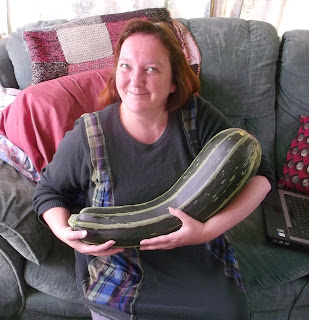Either way, this is where Ruth and I love to help.
PRACTICAL EXPERIENCE
We've spent many years living, visiting and working on eco/permaculture projects, farms and gardens all over the UK and in Portugal and have now got a wealth of practical experience. We've made loads of mistakes! which is a particularly good thing, because we can help you avoid some of them yourselves...
LITTLE AND LARGE
No project is too big or too small. Our clients' gardens range at the moment from a 8 foot by 3 foot patch to a vast walled garden, and we've planned for and worked on 100 acre farms, eco-villages, orchards and community gardens.
WOODLAND - THE CORE OF SUSTAINABILITY
My special interest is the woody aspect of a project, from planting trees, to renovating and managing orchards and woodland, setting up forest/woodland gardens, to making the things we need from local wood - not just raised beds and so on but also low impact housing homes and furniture.
 |
| Me at work on the verandah for the LogCabavan - it made a HUGE difference to have somewhere to sit outside |
 |
| The LogCabavan itself, a static caravan clad with garden fence panels and insulated with waste plastic. The trusses for the extra roof are local poles and bits of palette |
PRESERVING
Ruth is the one with the deeper knowledge of plants and also with the skills and experience for food preserving. Here in the UK we will do well to relearn these skills as soon as possible. With so much of food coming from abroad and are our local food yields coming mostly in quite a narrow part of the year, our food security is terribly fragile.
 |
| A shelf full of delicious jams, jellies, chutneys, pickles and the best maramalade ever - reminds me of my mum's larder |
 |
| They may not taste of very much on their own, but courgettes/marrows absorb flavours brilliantly so are great for storing bulk |
GET IN TOUCH!
So get in touch and see if we can help:
ianecowatt@gmail.com
07450 332 430

















